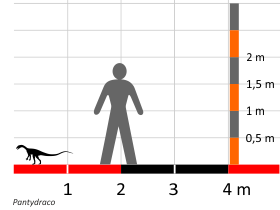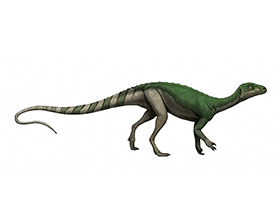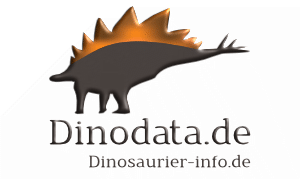Pantydraco caducus

Galton, Yates, Kermack, 2007
Klassifizierung: Sauropodomorpha
Fortbewegung: biped / quadruped
Ernährung: herbivor
Bedeutung des Namen: Drache des Pant-y-ffynnon Steinbruch
Die Fossilien des Pantydraco wurden im Jahr 1952 von Kenneth Kermack und Pamela Robinson in einem alten Kalksteinbruch gefunden. Der Fund besteht aus einem unvollständigen Skelett eines juvenilen Dinosauriers mit Schädel und Teilen vom Hals, der Schulter, des Becken und des Vorderarmes. 1983 wurde der Fund erstmals in einer Dissertation von Diane Warrener beschrieben. Im Jahr 2003 benannte Adam Mathew Yates den Fund als Thecodontosaurus caducus. Die Wissenschaftler Peter Galton, Adam Yates und Diane Kermack beschrieben im Jahr 2007 Thecodontosaurus caducus dann als eine eigene, neue Gattung Pantydraco caducus.
Höhe: 50 cm
Länge: 1,2 m
Gewicht: 5 kg
Holotyp: BMNH P 24
Fundort: Pant-y-ffynnon Quarry, Bonvilston, South Glamorgan, Wales

© Dinodata.de

© Andrey Atuchin
Weitere Informationen
A new species of the primitive dinosaur Thecodontosaurus (Saurischia: Sauropodomorpha) and its implications for the systematics of early dinosaurs / Adam M. Yates, 2003 / Journal of Systematic Palaeontology, 1 (1): 1-42
Pantydraco n. gen. for Thecodontosaurus caducus YATES, 2003, a basal sauropodomorph dinosaur from the Upper Triassic or Lower Jurassic of South Wales, UK / Peter Galton, Adam Yates, Diane Kermack, 2006 / Neues Jahrbuch für Geologie und Paläontologie - Abhandlungen. 12/2006; 243(1):119-125. DOI: 10.1127/0077-7749/2007/0243-0119
- - - - -
Bildlizenz
Größenvergleich © Dinodata.de:
 Creative Commons 4.0 International (CC BY 4.0)
Creative Commons 4.0 International (CC BY 4.0)
- - - - -
Grafiken und Illustrationen von Andrey Atuchin



